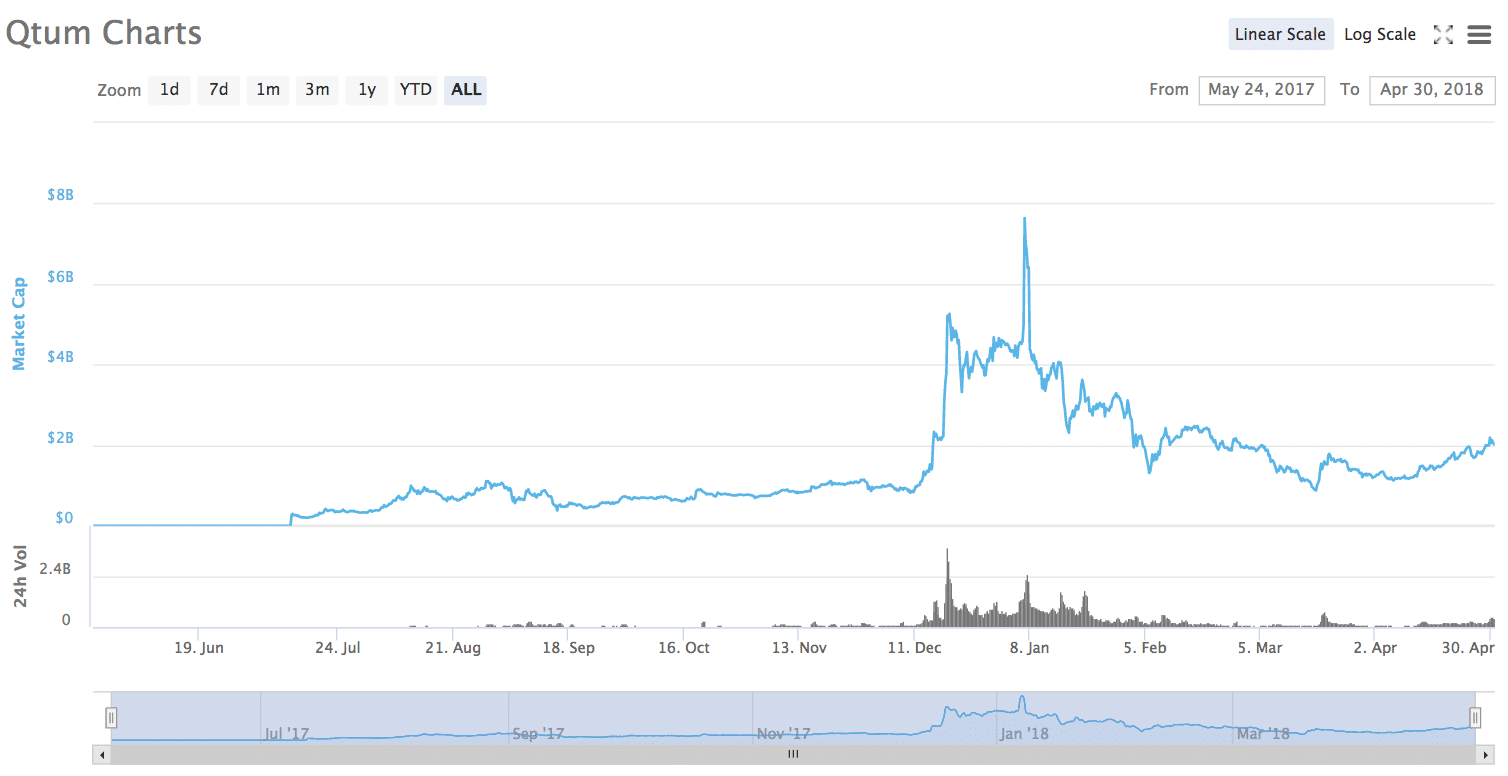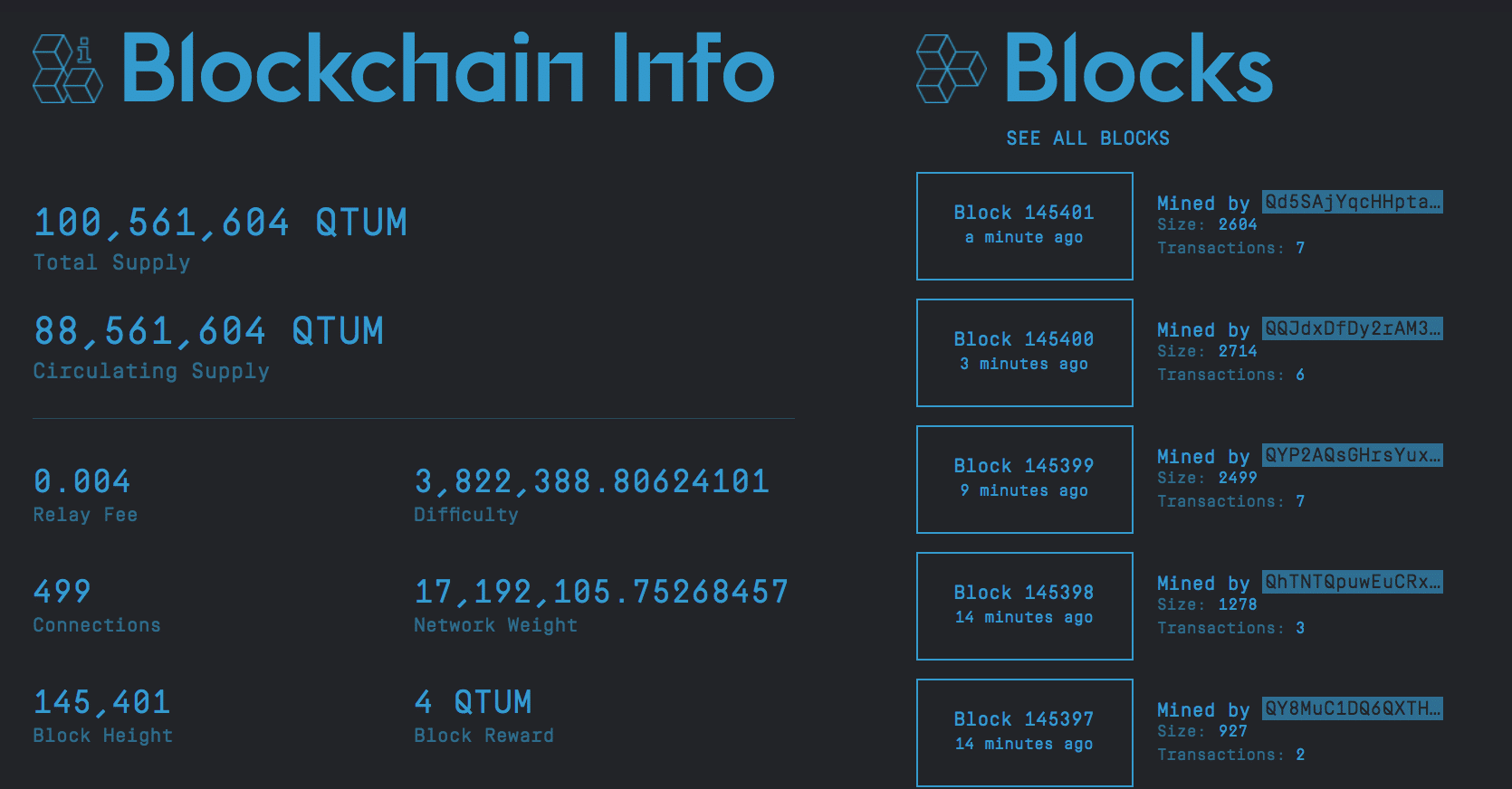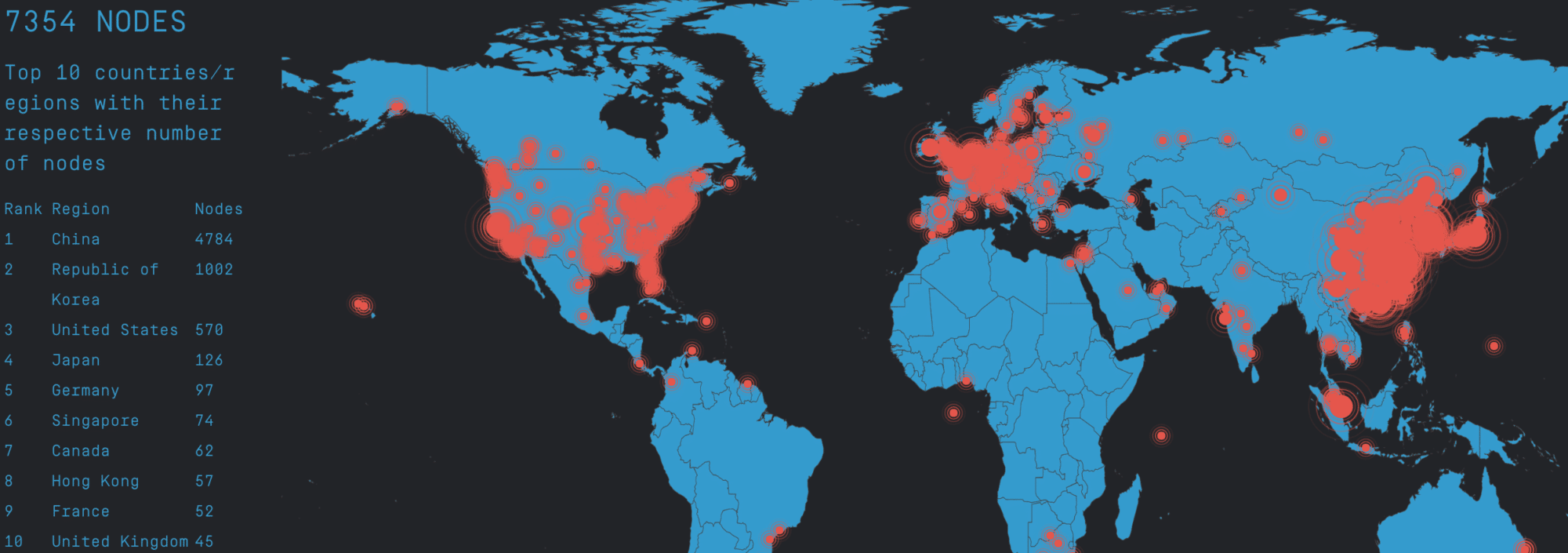Exclusive Interview with Qtum’s Patrick Dai: Scaling in the High-Velocity Crypto Ecosystem
 Few entrepreneurs under 30 can say they’ve launched a project with an all-time-high market cap of $7.3 billion.
Few entrepreneurs under 30 can say they’ve launched a project with an all-time-high market cap of $7.3 billion.
Meet Patrick Dai, the Founder of Qtum.
Patrick Dai graduated from Draper University, a private for-profit university and entrepreneurial bootcamp in Silicon Valley founded by Tim Draper. He is hailed as their first “unicorn”, startup lingo for a privately held startup company worth over $1 billion, and was also listed on the Forbes 30 Under 30 list in China.
Patrick was formerly employed at Alibaba and was seeking a doctoral degree from the Chinese Academy of Sciences before being making the jump into the blockchain world.
Qtum (pronounced Quantum) exploded onto the cryptocurrency landscape with a successful ICO on March 12th, 2017 raising $15.6 million. A Qtum token was $0.30 back in March 2017, and needless to say has ballooned to a high of 330x (currently sits at 75x) of its initial value. We got a chance to talk to Patrick at the 2018 Draper University Blockchain Intensive about everything from entrepreneurship in the blockchain world to balancing efficiency and fairness.
How did you come into the blockchain world from Alibaba?
[Alibaba] was a very good payment when you compare it other developers but still. I joined the industry in 2012. Before joining Alibaba, I was working on a Ph.D. degree in the Chinese Academy of Science. At the time, I was still thinking about what I should do? By that time, we already had the Ethereum idea but in 2016, the Ethereum is just a normal project. The price is $2 or $3 for the whole year. It’s still not a very successful project.
But I realized that it might be a good direction to go by combining the secure and simple design of the blockchain network of Bitcoin with a virtual layer, we can support a module virtual machine. It’s a good direction to go because, by this design, you have a layered blockchain. It’s not one simple layer, it’s a layered blockchain. That’s a very good concept.
In my Ph.D. degree, I did a lot of research on the telecommunications ecosystem. They already have the layer design. The layer design is very scalable and it can really solve some problems. For the Ethereum network right now, if you want to store your Ethereum currency in multi-signature ways, you don’t have the native support. You need a program or smart contract like the Parity wallet. Why did they lose some money or be frozen? Because they put the money in the smart contracts, but the smart contracts are an application layer. You can never put too much money in the application layer. It’s not as secure.
How would you describe entrepreneurship in general in the blockchain space?
First, it starts with the passion. I joined the industry, not for money or other stuff, it’s just because I have the interest in the industry. I was a student, I joined in the industry very early.
The first time I heard about Bitcoin, it was created as a permissionless network that everyone can join. A free network. For me, that’s very attractive because I don’t have to get any permission to do anything on the network. I can fully release my creative potential on the network. That’s something I think can be useful for people.
The second thing is timing. Timing is very important. Especially in this industry, the timing always changes. We have the crypto winter. Last year, it’s a very bullish year so last year was very good timing for the start of the project. It’s hard to say, but timing is very important.
The third thing is to be patient in the industry. It’s a very early industry. You need a long-term plan. Not for tomorrow or next month, but for two years, five years. What’s your plan in five years for the industry? What do you really want to offer? What do you really want to contribute to the industry? Is it just for the price to go higher? It’s not only about the price, it’s about what you do for the industry. That’s our point.

We focus on the long-term value. We are doing something that’s hard to understand for some people. No one cares about it. Why are you building a new virtual machine? Why are you building a decentralized governance protocol? All of the community says oh, they wanted the price higher. It’s long-term, it’s not for tomorrow. Be patient enough and focus on the long-term value and finally, you will be rewarded.
What’s been one of your favorite projects either built into the QTUM blockchain or just in the crypto space in general?
On the QTUM blockchain, we’re going to have the first alive dApps tomorrow. The Bodhi is a prediction market. They are really building the project. It’s not like there are a lot of dApps in the industry.

A lot of dApps are useless dApps. They hype the concept, they raise the money, and then they do nothing. Sometimes they want to do something, but the model is not working. Bodhi is one of the few teams that they have the concept and they are working on it and delivering their promise. Also, the prediction market can be a great integration with a blockchain protocol. That’s something where they’ve created some real attention.
Another project is the Spacechain. It’s a very good project even though they are facing a lot of problems right now. The price isn’t that good and other stuff involved, but we still need to think in the long term. Before the Spacechain, no one thought about combining the blockchain with space technology or the space industry. If they can prove that the model works, they can create a new way to do the funding of new technology in the public sector of the space industry. Right now, you’ve got limited participation from the government. Space technologies take a long time. They have a very good developer, Jeff Garzik, and he and his team really want to build something. I think it’s also representative of the spirit of the blockchain. The spirit of the blockchain is to be different from the mainstream world. That’s why there’s Bitcoin.

A lot of people from the mainstream world think Bitcoin is strange and different. We need something strange in the world. We need something like the Spacechain. They want to do something a crazy way just to see if it works. If they can really make it happen, they can organize a lot of resources in the world and work together. It’s impossible right now for the rocket teams from China, from Russia, from the US to work together.
The projects were all military and government projects. If they could organize under the Spacechain framework, everyone can contribute to the opensource of the space technology. They can collaborate and the blockchain tokens can be used to build large-scale international collaborations. The idea behind it is very cool, but it just needs the time to verify. Time will tell.
How would you describe the evolution of infrastructural platforms and how you guys compare to other platforms like NEO? Is it more of a competition or is it a collaboration to advance the blockchain concept together?
I think as of right now, we have some new platforms every month, but the core idea behind Qtum is that you want to build something based on the matured and fully tested technology. In this industry, we have so many prototypes. We have so many promising projects that are never released. Our economy is really different because we finished the ICO in 2017 and the same year, we launched the Mainnet. It’s already live half a year right now and everything is working, mostly.
Technically speaking, it’s already a very good success right now. I think that the core idea is that you want to build the base in the current ecosystem and to make the current ecosystem better.
We are building some very good innovations. We’re building the Qtum X86. At the same time, we’re leveraging the AVM and the Ethereum Virtual Machine, we are building the X86 and people can use the majority programming languages to allow them to do the smart contracts like C++, Rust, Python. They can it to do the programming and use smart contracts.
Also, when you compare the technical features, we are doing something very cool. Earlier in the Satoshi whitepaper, he only designed the Bitcoin to become a peer to peer eCash transfer system. It’s very limited flexibility. But for QTUM, we still keep the limited flexibility of the Bitcoin network as a basic protocol, and then we create a virtual layer. The virtual layer makes the network really powerful. The virtual layer can support many, many virtual machines.

This way, we take advantage of the Bitcoin design, and through the virtual layer, we can support part of the AVM flexibility and smart contracts. We have our own virtual machine and also, the Bitcoin network itself can process all the transaction using the Bitcoin stamp.
This is very different because what you see in our economic model, it’s a single transaction per time. There are coins I can only transfer to you each time. But for Bitcoin, if you are familiar with Bitcoin transactions, one input can have one hundred outputs. You can broadcast one hundred transactions parallel in a network.
Also, it’s stateless. For Ethereum, all the state storage is 400 gigabytes right now. The Bitcoin network full blockchain is 200 gigabytes. It’s growing faster than the Bitcoin network. That means that one day, it will become more centralized again.
In this industry, we’re always facing the problem of balancing efficiency and fairness. Efficiency with decentralization. Centralized is more efficient but we should ask ourselves if efficiency is really what we want because if we really want efficiency, we should use banking services. All of the banking services process more transactions.
Why would we need cryptocurrency? That’s the core idea. A lot of projects don’t understand the tradeoff. They say they can process 10,000 transactions per second. So, you say if you can process 10,000 transactions a second then your competitor is not Bitcoin or some other blockchain project. Your competitor is Visa or Mastercard or Alipay or WeChat. Then you’ll fail because they can process 100,000 transactions a second.
I think the very original idea for the Bitcoin network is firstly the peer to peer network. If it’s not a peer to peer network, personally, I think that loses the real meaning of the blockchain. That turns to a privileged network where someone has more rights than you. You can’t be peers, you’re not equal on the network. The Bitcoin network is equal. If I become a full node, you could be all the others, the peers.

For the US, you still have the supernodes. You still have the 21 big nodes process all the transactions. What’s the difference when the 21 servers process all the transactions? There’s no big difference. The big difference is that you have a token for people’s speculation. What’s the other difference? If I want higher efficiency, I prefer Google Cloud. It’s more efficiency. I run my application. I don’t need other verification. Why do we need to build another centralized platform?
It’s focusing on your core value platform which isn’t efficiency. It’s to provide that decentralized component that a lot of centralized places don’t have.
For sure, you need a trade-off because you need to sacrifice the decentralization for higher efficiency. That’s how it works. We have the CAP theory, computer science theory for all the distributed networks. You cannot achieve efficiency on a decentralized network at the same time. You need the trade-off.
What are the next steps for the Qtum team?
Right now, we’re still focused on the very technical innovations like the X83. We’re going to release that in a month or two. We’ve got the prototype ready, so people can program in the majority of programming languages. That’s our main focus right now. The second focus is still technical innovations like we’re building an enterprise version over the Qtum.
We talk about efficiency, so let’s talk about the enterprise version. The efficiency sometimes is useful for the enterprise use case or for some centralized use case. It’s OK because we still need WeChat Pay to process the transaction. PayPal processes my transactions every day. It’s useful. I’m not saying they have nothing useful. But for the community here, you need fairness.
The fairness is more important, the decentralization is more important for the community rather than the efficiency. Then for the gaming industry, for the digital contents, it’s a centralized business model. They need an efficient solution to process their transactions.
That’s a reason why Qtum builds another version of Qtum called the Qtum Enterprise Version, we’ve almost finished all the design. We are doing the programming right now. For this version, we’re going to support a very high efficiency processing the transactions. Maybe you can process 1,000 to 2,000 transactions in the Enterprise version. But for sure, it’s very centralized. Maybe you’ll only have 12 nodes to process the transactions. Those are two things we’re working on.
The third thing is that we’re supporting dApps from the gaming industry and they are working in the digital content industry. I think a lot of ICO concepts are not working, a lot of dApps are not really working because the dApps just use blockchain as a token. Nothing more.
As a token, they raise money, nothing else. But as a full blockchain, you want to bring blockchain to the next level. We have to think about which industry can bring another ten million people to the blockchain industry.
The most popular industry is the gaming industry with all the digital content. They have a lot of users and it’s already suitable with the blockchain because it’s already digitized.

A lot of people are doing blockchain with the financial industry and supply chain. All the other real-world industries, it’s very hard because it’s hard to bring the data on the blockchain. You need to trust a service or middleman party to record the data from the real world and put it on the blockchain.
Then the blockchain offers the smart contracts, but you need to translate the results from the blockchain to the real world again. It’s very involved. The Bitcoin network grew so quickly because it’s doesn’t really involve the people, it involves the programming. It can grow faster.
If you involve more people, it will be slower. I think the first breakthrough point of the next wave of the blockchain is going to come from the gaming industry or the digital content industry.
Have you seen Steem apply their smart media tokens to a bunch of different other projects like D.Tube and all that digital content? You can pretty much just take the whole Steem blockchain and protocol and spin-off another thing and have the Steem protocol running on an Instagram or the Steem protocol running on a…
That’s a good idea. Another challenge for the industry is that it’s still a limited industry. There are still some gaps from the blockchain to the mainstream. Last year, mainly because of the ICO, every ICO from different industries, they bring some customers from the industry and that’s the reason why the price is going up for all the cryptocurrencies, but it’s not going to last forever. People will start to realize that some of the tokens are useless.
Some of them are just a huge manipulation or some tokens will fail. It will take some time for people to learn. But after people realize, they’ll be re-thinking about what the real value of a blockchain is. What’s the real value of Bitcoin, Ethereum, QTUM? Do we need decentralization? Will we need the efficiency? Or will we just need another big speculation?
People just need more use cases. They need more data points. For the majority of people, their view is September 2017 to April 2018. They don’t have any data points, they don’t see anything else working. The more time that passes by, the more projects they see working and the more people are like hey, I made $10,000 just writing articles on Steam. Wow, blockchain can actually do something crazy.
The Enterprise version is something we are working on. The third thing we’re working on is that we still have the idea. We want to release a smart contract store. It’s like an Apple Store. For the protocol for ourselves, we cannot develop all the applications ourselves, but we can offer the tools to enable the third-party developer like the Apple Store offering all the framework for you to develop applications for their store.
We want to offer our smart contract store to build a marketplace, so people can sell their smart contract templates. They can sell their smart contract applications. Just like you buy all the apps from the Apple Store. This way, people can really use this.
That’s another idea we’re still working on. Technically, we’re focused on these three ideas. The X86, the enterprise, and the smart contract store. Another thing we are still working on is the education side. We are working with many universities in China, in Estonia, in the US. We’re opening a blockchain course in universities. The first course will happen in Singapore in two weeks.
We are opening a two-day course to teach the students how to do programming on blockchain and on QTUM. We have another course at TTU in Estonia and we already opened this course in China at a few universities. I think we still need a very good education for the young developers, so we can attract them to our ecosystem. So, that’s another focus, the education is important. The long-term value.
Thank you, Patrick, the Qtum team, and the Draper University team!
To establish a more foundational and functional understanding of Qtum team check out our QTUM guide, their whitepaper, and the QTUM site.






